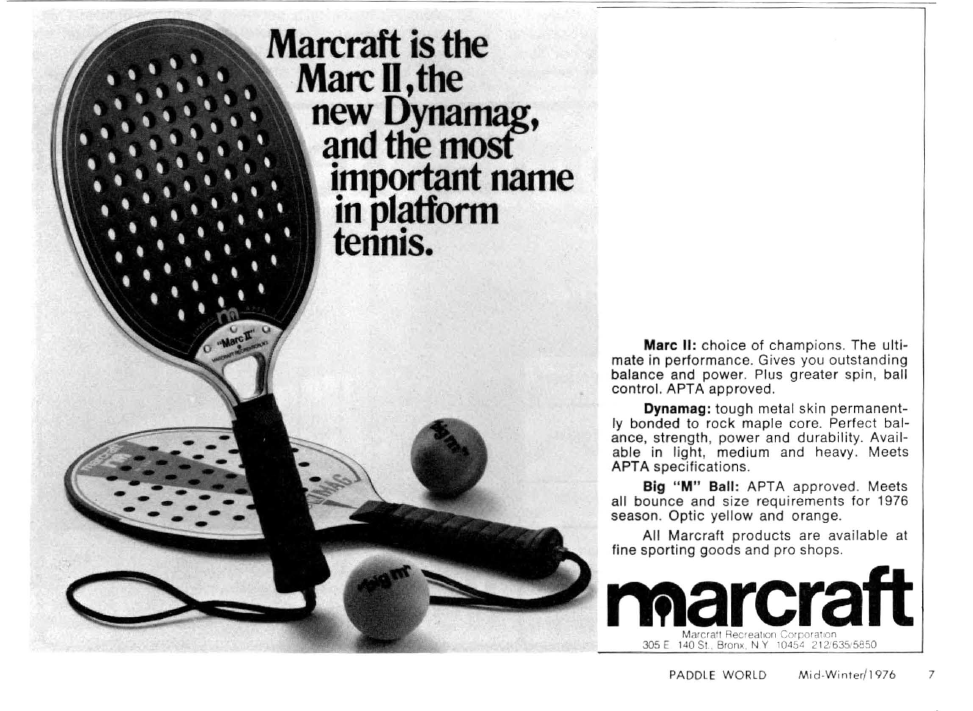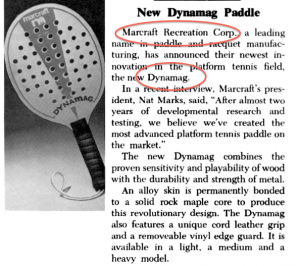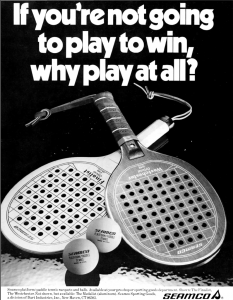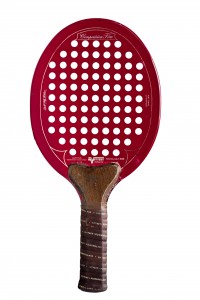Paddle innovations drive APTA to revise specifications for number of holes allowed in paddles; balls also required to meet APTA specs.
The APTA Board accepted the Equipment Committee’s recommendations to update the standards at their June meeting.
Only balls and paddles certified by the Equipment Committee as meeting these specifications could be used in sanctioned or ranking tournaments. However, it was now not necessary for balls and paddles to be formally “APTA Approved”; this designation was awarded to equipment at a later date.
The rapid growth of the game the high expectation for its continued expansion had encouraged a number manufactures to produce paddles and this drove innovation. This innovation forced a change in the APTA paddle specifications, specifically with respect to the number of holes allowed. Up to late 1974 the had been a requirement that the paddle should have 63 holes with a tolerance of 52-74. the developments of the Play-morTM paddle which used an aluminum honeycomb core and had just 4 holes and the Marc II paddle by Marcraft which had 87 holes in 1974-1975 forced the APTA’s hand and paddles now could have “a maximum” of 87 holes.
NOTE: For the history of the paddle from the early days through early 1990s: Jim Tate’s article The Paddle Itself has a History Too!
[See APTA Official Rules for 1974 and 1975 for specific changes]









